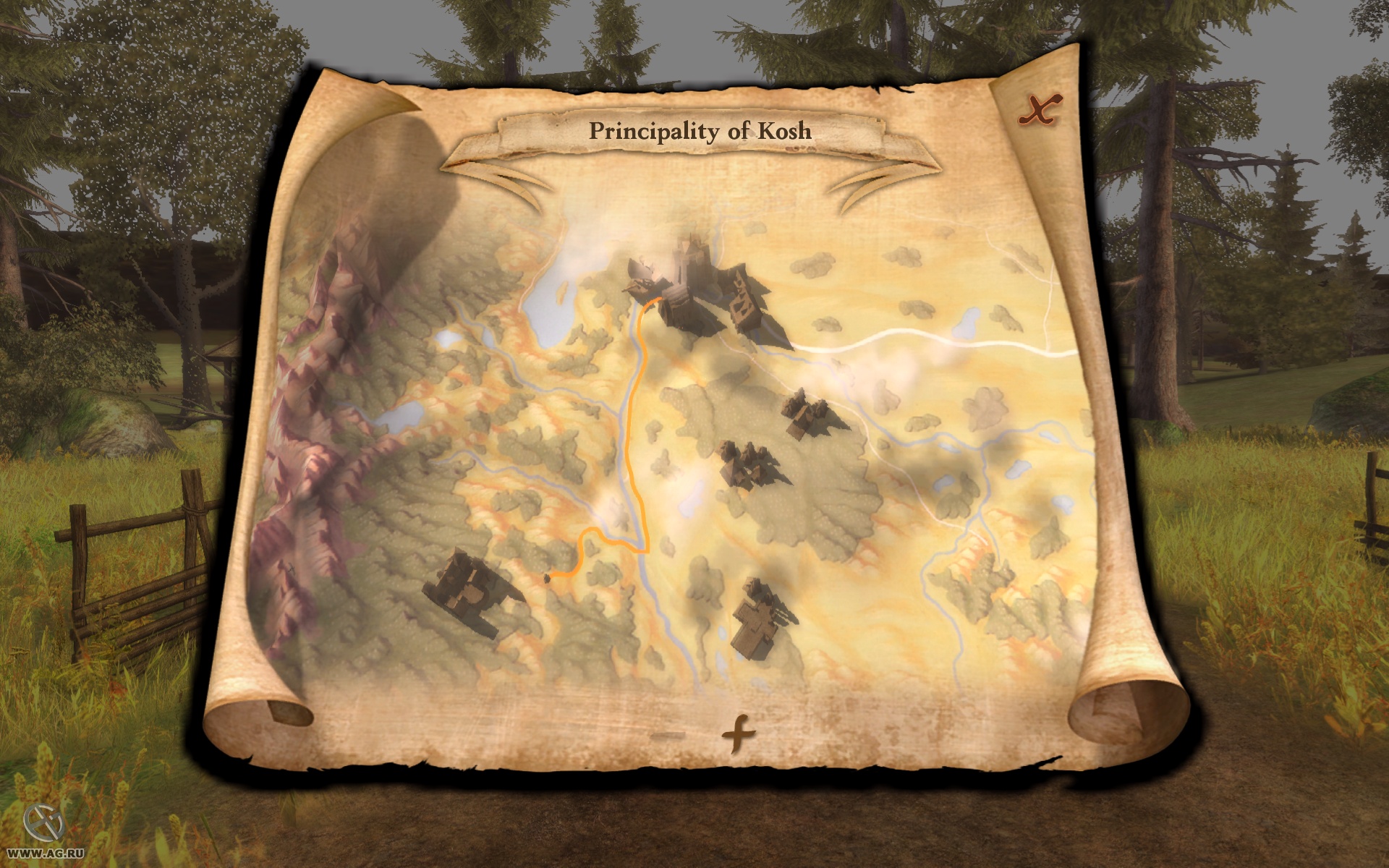You can trust VideoGamer. Our team of gaming experts spend hours testing and reviewing the latest games, to ensure you're reading the most comprehensive guide possible. Rest assured, all imagery and advice is unique and original. Check out how we test and review games here
Drakensang is not, as Neon thought it might have been, a video game based on the cartoon duo Drak, a creepy cute vampire with the power to turn into a bat, and, or ‘n’, Sang, his banshee sidekick, who freezes enemy goons in place with his screech attack. No, it is not.
Drakensang is instead an ultra hardcore PC-exclusive party-based role-playing game from little-known German developer Radon Labs. And when we say hardcore we really mean it. There are so many stats to keep track of, not only to do with the development of your main character but your party members, too, that even a statistician would struggle (or revel, in all probability). Drakensang harks back to the time when western role-playing games didn’t have to come out on consoles to make money, a time when Bioware and co didn’t have to make their games “action shooters” with role-playing elements. And it does it with its chest out and chin up.
Given that the game’s set in a place called Aventuria, you shouldn’t be surprised to learn that it’s packed full of Tolkien-esque creatures and environments. There are elves, dwarves and zombies, wizards, green fields, creepy mines and dungeons. Imagine Lord of the Rings with a Germanic twist. It begins with character creation, a bemusing exercise in the clicking and tweaking of numbers and abilities. In RPGs I like eschewing pre-made classes and crafting my own. You can do this in Drakensang, via the Expert mode, but unless you have an encyclopaedic knowledge of the Dark Eye rule set that governs the pen and paper license on which it’s based, nothing will make any sense. Frustratingly, I was left to pick from one of the 20 pre-made character archetypes.
This lack of explanation is a problem Drakensang suffers from throughout its 60-odd hour campaign. From your first footsteps as an adventurer seeking out an old friend to your last as a fully-fledged, levelled up hero, Drakensang at no point holds your hand, even for a little bit. The small tutorial pop-ups do a woeful job of explaining what’s going on and why, so much so that you’ll probably suffer nasty status ailments you’ll have no idea how to cure, and fail to make the most of your incredible character talents because you didn’t know you had them.
Of course, for some this will be brilliant: finally, a WRPG like they used to make ’em! Fair enough. If you enjoy spending as much time working out complex equations as you do running fetch quests for NPCs, you’re in business. But if you thought Bioware’s Mass Effect and Bethesda’s Fallout 3 were complex games, Drakensang will blow your mind.
Again, there’s nothing inherently wrong with the game being so hardcore. In fact, comparisons with current popular role-playing games don’t really make any sense, since Drakensang provides such a different experience. And, while it is a pain in the arse, if you take the time to familiarise yourself with the game’s rule set, the bemusing character development starts to unravel itself to the point where you begin to enjoy tweaking and fiddling with it. As you complete quests and kill monsters you accumulate “adventure points” that are spent on raising the many, and I mean many, abilities, talents and spells associated with your party members. Your overall level is a measure of the overall experience that you’ve amassed, and defines your maximum talent and spell values (there’s a calculation governing this, of course).
To give an indication of just how in depth your character sheet is, here are some of the values you can fuss over: Dodge Value, Attack, Parry Value, Ranged Combat and Hit Points. And here are some of the attributes: Courage, Cleverness, Intuition, Charisma, Dexterity, Agility, Constitution and Strength. And that’s not including all the base values, either. Your potential enjoyment of balancing your party and working out how best to spend your AP will make or break a purchase.
Outside of this, Drakensang disappoints. There’s an inescapable feeling that what you’re doing, the exploration, the combat, the completing of quests, is archaic. Talking to NPCs triggers lines of cliché-ridden dialogue that you can’t help but skip through. Many of the quests are tiresome collect-a-thons and, run to here, get this then bring it back snore-fests that involve breaking open more wooden barrels than enemy heads. Understandably, the presentation and production values aren’t up there with the best the genre has to offer, so while the graphics depict the fantasy world well enough, nothing stands out or wows. The combat harkens back to the days when Neverwinter Nights and Baldur’s Gate ruled the roost. The action will pause when an enemy turns up, allowing you to dish out commands to your assorted group of adventurers. Then you unpause (via a press of the space bar) and off they go. You can play in real-time if you want (the AI does an OK job of looking after your party), but as you work your way through the game and face more and more enemies at once, strategic micro-management is nigh on essential. Indeed, staying alive becomes fiendishly difficult.
So, Drakensang’s best not when it’s being played, but when it’s being tinkered with. It’s an old-fashioned, sometimes archaic, other times deeply engrossing game that rewards and satisfies according to how much effort you’re willing to put in. If the thousand words you’ve just read make you feel like sharpening your pencil and dusting off your dice, the solid rule set on which the combat and character progression is based will have you stroking your Gandalf-quality beard for months on end. For everyone else, however, it’ll be too complex to get into.

/https://oimg.videogamer.com/images/de80/drakensang_the_dark_eye_2.jpg)






